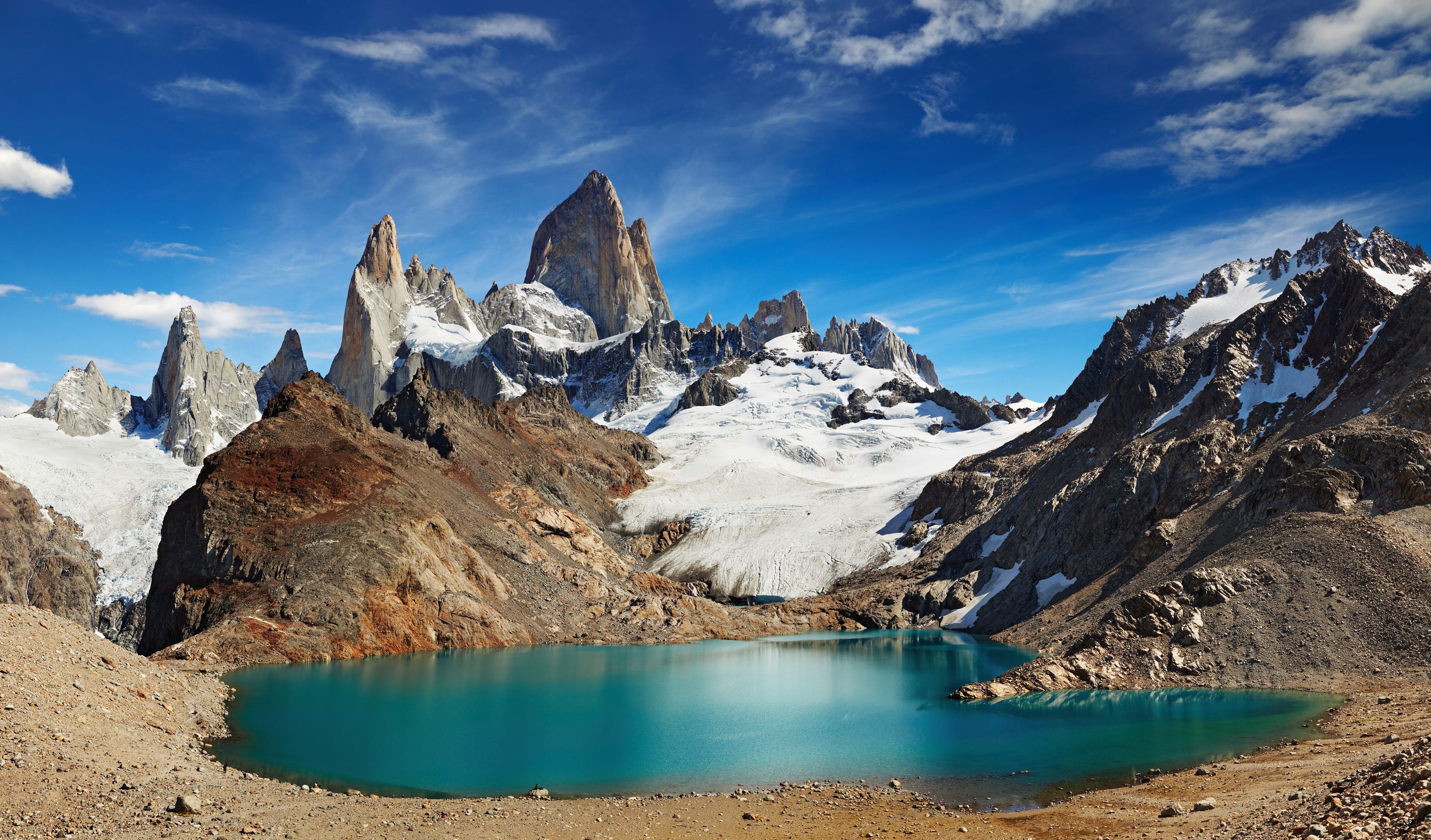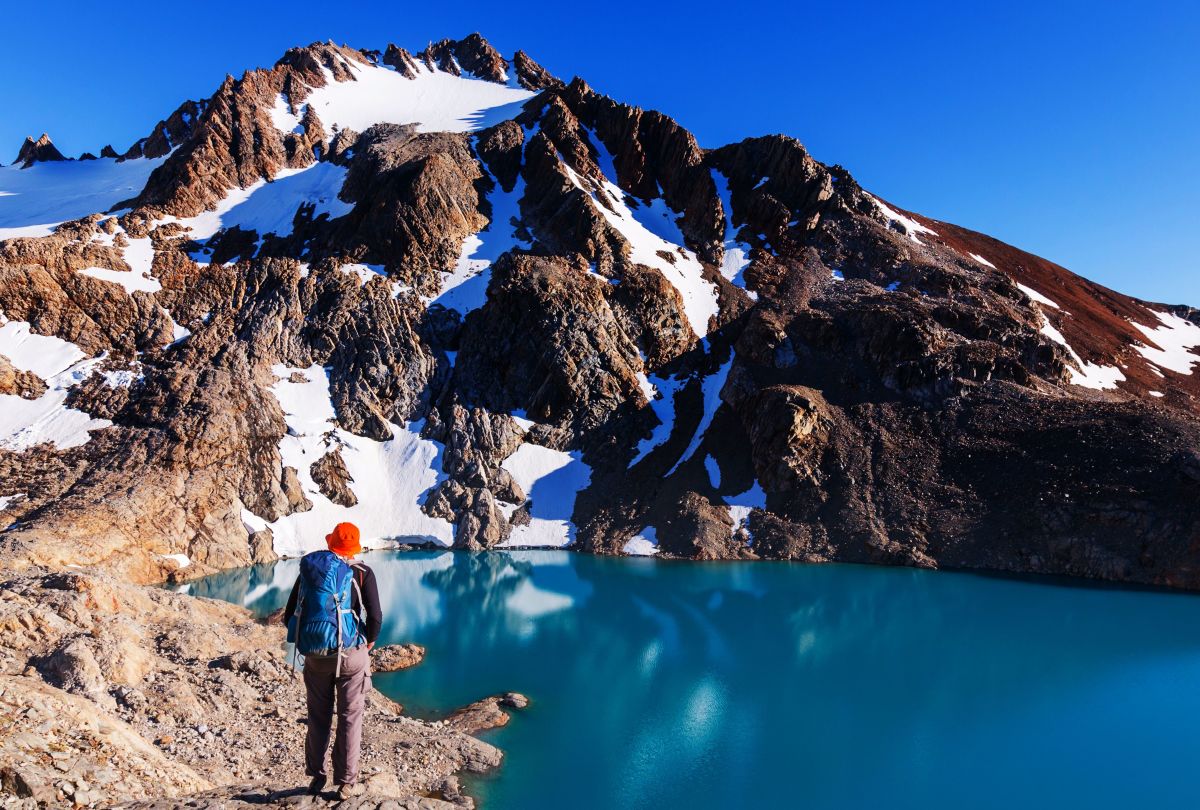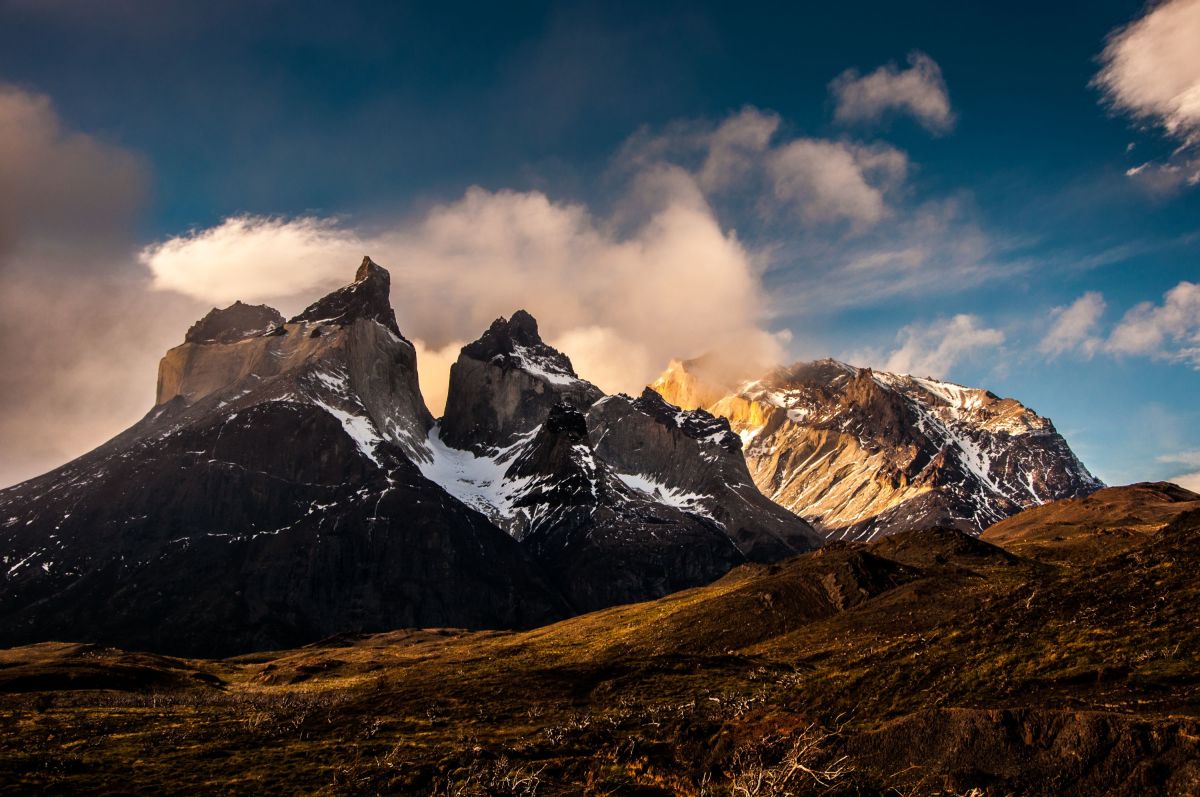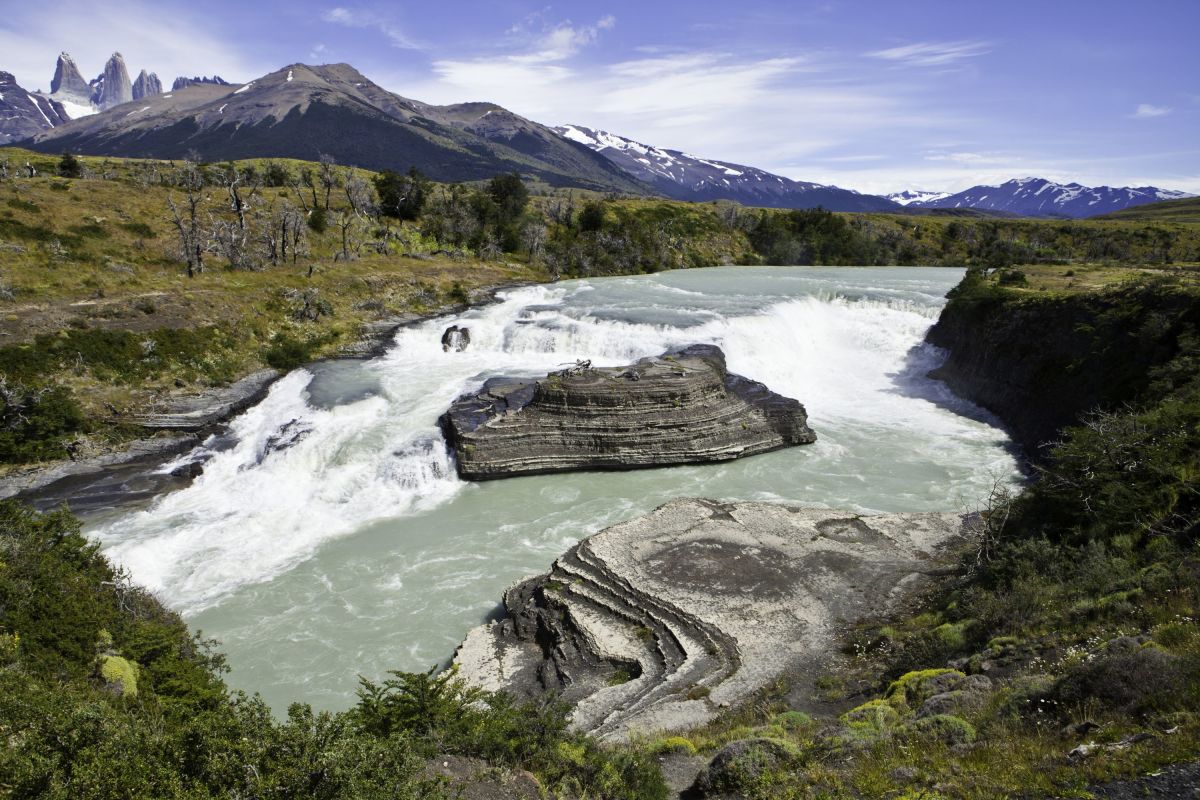
Patagonia Packing List
For a number of reasons, the mere word “Patagonia” conjures up images of remote, breathtaking landscapes and legendary adventures. Patagonia is a region just slightly larger than the state of California that spans southern Chile and Argentina, covering the entire width of both countries as they reach their terminus at Tierra del Fuego, the southernmost continental point towards Antarctica.
Patagonia is famous largely for its rustic culture and truly astounding natural beauty, including the knife-edge skyline of the Fitz Roy peaks that inspired the global outdoor gear brand. Though Santiago and Buenos Aires are large urban cities, once you leave those areas you’ll be in the company of relatively few other human beings. Neuquén in Argentina and Temuco in Chile are the few larger urban areas, while the countryside is largely the domain of bagualero cowboys, cattle and wild llama-relative guanacos. The Mapuche indigenous nation is also still present in Patagonia, along with their traditional culture.

The parks and peaks of Patagonia are second to none, adorned with thundering waterfalls like Iguazu, mountain ranges like Cerro Torre and glaciers like Perito Moreno. The dramatic Andes Mountains are born here, sliced with deep fjords in the west of the region, and the Pampas plains and steppes dominate the east. The scenic splendor of Patagonia that draw both adventurers and romantics here is truly some of the most famous in the world, and are the perfect stage for outdoor adventure activities. Packing the right gear is a must, so read on to get the inside scoop on what to pack, when to travel, and what to expect!
Patagonia's Best Activities: Come Ready for Anything!
If you’re looking for an array of outdoor activities that gives anywhere in the world a run for its money, Patagonia is your place: kayaking, cycling, glacier trekking, horseback riding, fly fishing … Patagonia leaves no activity aside. Accommodations can range from chic hotels to yurts with the feel of a Patagonia camping trip, and everything in between. Having the right gear, clothing especially, will make for the best trip possible, along with choosing the right time of year to travel. We’ll discuss things like Patagonia hiking gear a bit later on.
When to Visit Patagonia
Being deep in the southern hemisphere, Patagonia’s seasons are not only reversed from the Northern where many of us live, but they’re also a bit more extreme. Located between 40º and 55º southern latitude, it spans an area similar in latitude to Washington and up into the middle of British Columbia, but with the Pacific and Atlantic Oceans on both sides.
Patagonia covers a vast stretch of latitude, elevations and ecosystems, so these estimations are very broad - be sure to inquire about the specific region you’ll be visiting. Spring, summer and fall are the best times, and many tourism operations all but shut down in the winter. See the chart below for an outline of travel seasons, general weather, and daylight, and note the high season of travel: be sure to do your flight and Patagonia tours planning well in advance, as this high season window fills up fast!

When it comes to Patagonia weather, December is ideal … same goes with Patagonia in January. As stated above, the prime window of weather requires advance planning, so don’t delay!
Patagonia Packing List
Word to the wise: when you’re headed to Patagonia, pack strategically. Landing in Buenos Aires or Santiago, you’ll surely be able to track down anything you’ve possibly forgotten, but you don’t want to burn precious time doing so … you want to be off to your adventures without delay!
The thing to remember about travel in Patagonia, even in the summer, is to be ready for a variety of weather at any and all times. Even summer can bring, cold, rain, and even snow! To pack well is to pack efficiently, as bringing too much gear can weigh you down and hold up the adventure. Be sure todo a couple “dry run” packing tests before your departure to be sure everything is well selected and fits in your bags!
Also bear in mind that Patagonia trips vary from luxury honeymoon stays to maxing-out adventures, so plan and pack accordingly.

Patagonia outfits should be efficient, made up of various layers of clothing, and of colors that go well together so they can be combo’ed into a variety of configurations. Keep a light rain shell jacket with you at all times unless you know for sure that you’ll be safe from rain. See the packing list at the end of this article, and pay special note of italicized and underlined Patagonia hiking clothes and other items that apply to more adventurous itineraries to Patagonia.
When it comes to Patagonia travel clothes and all the rest of the goodies prepping for the trip of a lifetime calls for, we’re here to help! See also our What to Pack For Your Trip Guide to get dialed on packing for Patagonia or any of the other destinations we serve, and reach to our Travel Specialists to get started with planning your journey!
Patagonia Packing List
Luggage
- 20-30L backpack and 45-60L outer duffel bag (can hold some of your larger items and be carried by your porter)
- Smaller organizing packing cubes or ditty bags
Clothing
- Breathable underwear and wicking socks (Patagonia hiking socks are a critical component: bring thin synthetic liners plus medium-weight synthetic or Merino wool)
- Base layer tops and bottoms, including heavier weight base layers if you plan to be trekking
- 2+ t-shirts, wicking material
- 1+ long sleeve SPF sun shirt that can double as undershirt
- Shirt and pants/skirt suitable for a night in a city restaurant
- Lightweight quarter zip fleece top
- Waterproof breathable rain jacket and rain pants with reinforced knees and seat
- Fleece and/or insulated down or synthetic jacket
- Sun hat and beanie and balaclava
- Inner and outer gloves
- Hiking boots and casual, lightweight footwear
- Consider instep crampons if planning for extensive glacier treks
- Toiletry kit and medications
- Anti-inflammatories (ibuprofen/Advil) can help with the physical demands of trekking
- Anti-diarrhea medicine (loperamide/Imodium)
- Basic first aid kit and hand sanitizer
- Sunglasses and strong sunscreen, as you will be at high latitude AND altitude
- Insect repellant
- 3-4 season sleeping bag and pad as needed
- Earplugs
- Sleep mask
- Packable/neck pillow, or a small pillowcase
- Mosquito net as needed
- Camera(s), charger and SD cards
- Portable power pack
- Wall plug adapter and converter
- LED headlamp and extra batteries
- Smartphone in rugged, waterproof case
- TSA approved multitool
- Paper map of area
- mini duct tape roll, sewing kit with heavy needle and dental floss
- First Aid Kit
- Neck/waist money storage for cash and passport copies
- Luggage locks
- Water bottles and/or hydration pouches, water filter (optional)
- Hydration bladder (2-3L)
- Small personal snacks (energy bars, gels)
- Travel accessories: Folio for passport, immunization card/other documents, travel wallet
- Trekking gear ( if doing an extensive trek): Trekking poles, navigation ( GPS, compass, and maps), Emergency Gear( whistle, mirror, bivy shelter)
Base Layers
Casual Wear
Outwear
Insulation
Handwear and Headwear
Footwear
*Tip: wear your boots onto your flights - they’re the hardest thing to replace if your luggage gets lost!
Tolietries and Personal Care
Shelter and Sleep System
Technology and Toolkit
First Aid, Safety and Security
Food, Kitchen, and Hydration
Miscellaneous

